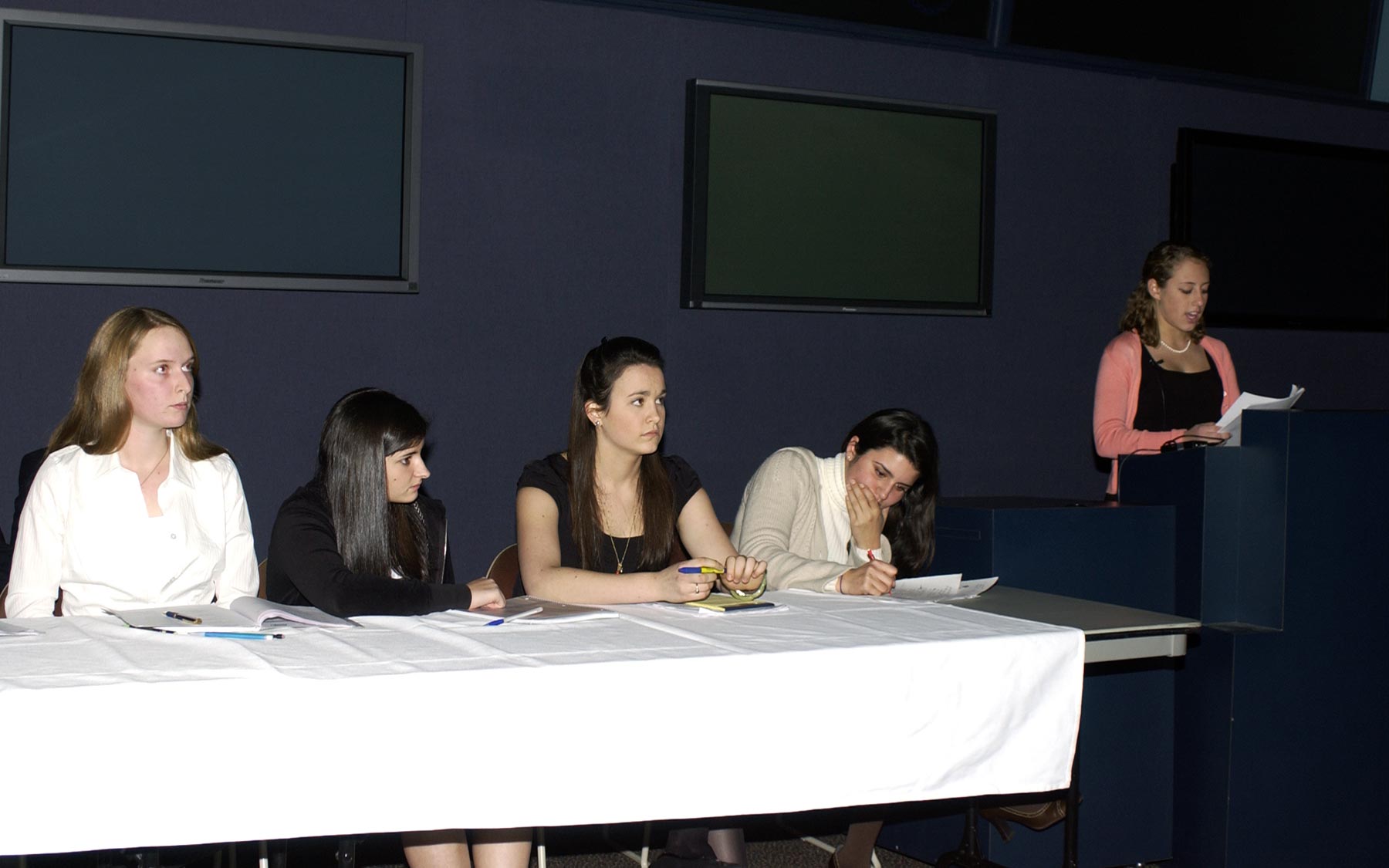Students from Cold Spring Harbor High weigh benefits vs. risks of genetically modified foods
Cold Spring Harbor, NY — Strawberries that survive frost… tomatoes with a longer shelf-life… rice with built-in Vitamin A. Ever since their first appearance in the marketplace in 1994, genetically modified (GM) crops have spawned spirited public debate.
Against the positive arguments of those who have developed and commercialized these products, questions and doubts have been raised—by pro-GM scientists and activists, who have found fault with corporate producers of GM foods, and by consumers who have sought to understand the benefits of GM crops and the risks, if any, of consuming them.
The arguments continued on the evening of Dec. 8, when 16 students from Cold Spring Harbor High School spoke passionately on both sides of the issue in a two-hour debate held at the Dolan DNA Learning Center (DNALC). The DNALC is the world’s first science center devoted entirely to public genetics education. Operated by Cold Spring Harbor Laboratory (CSHL), the pioneering facility aims to educate elementary school students about the principles of genetics and disease risk; give high school students the opportunity to perform experiments with DNA; and prepare families for the “genome age” by giving them access to genetic information needed to make informed healthcare choices.
GM crops: Benefits vs. risks
Among the 11th and 12th graders from Cold Spring Harbor High School who presented the positive case for GM foods this past week was Morgan Daver, who stated the broad case: “GM foods have economic, humanitarian and health-improving appeal.” Daver’s team backed up that statement by noting that engineered crops were designed to grow faster, produce more nutrients, resist herbicides and pesticides, and survive harsh environmental conditions such as excessive soil salinity. Designed to enjoy a longer shelf life than non-engineered crops, engineered crops were characterized by the team as a means of solving serious food crises in developing countries.
The “anti”-GM team countered just as passionately with an argument that centered on uncertainty over safety claims made in behalf of genetically engineered foods. “We have no idea of their impact on human health and the environment in the long run,” said Nicholas Chmelev, one of the “anti” team’s spokesmen. Emphasizing the lack of long-term, large-scale studies on the safety of GM crops, team members drew parallels with the now well-known dangers of tobacco use. “Look what happened with cigarettes,” said Danielle Aliano. “It took decades before people realized its link to cancer.”
The audience, which took an active part in cross-questioning the two teams, also got into the debate with gusto. Among their concerns: that GM foods could spark serious food allergies; and that marketers of GM products are less motivated by altruism or safety concerns than by profit.
In the end, the “pro”-GM team made what may have proved a winning point with a compelling argument from Ilyssa Bergsten. “You take medicine and eat food laced with countless chemical preservatives all the time without really knowing what their long-term consequences are,” she said. “So why should this as-yet unsubstantiated fear about GM-foods stop them from being used?”
The judges—drawn from among the CSHL staff—awarded the prize to the “pro” team based on clarity of argument and presentation style. But both sides agreed the experience was a rewarding one for all who took part. “They were just as excited about this event as they were about doing experiments in the DNA lab,” said one proud parent.
Hands-on experiments at DNALC
The experiments referred to are part of a partnership program between DNALC and Cold Spring Harbor (CSH) High School. Now in its 3rd year, it enables high school juniors and seniors to spend an hour each day in the DNALC’s labs learning how to work with DNA, the genetic material found in every living cell.
Some of the projects performed during the current school year have included extracting and amplifying the students’ own DNA and learning the method behind the technique called DNA fingerprinting. The students even got a taste of bioinformatics—the science of using computation to analyze the genome – by learning to use software to recognize genes and their structure within a given DNA segment.
As a supplement to their lab-work, the students have also learned about various aspects of science, ethics, and policy that make GM foods controversial. To complete their learning experience, the DNALC’s teachers came up with the idea of a debate as a course requirement that would encourage students to frame informed opinions about the topic.
“The learning center is dedicated not just to teaching science, but advancing public understanding and science literacy,” according to Jason Williams, an educator at the DNALC and the moderator of the evening’s debate. “To that end, this debate was a great opportunity for students to understand the responsibility scientists have to make their work accessible to the public, and engage people in making informed choices even in technically complex areas of policy.
“Our partnership with CSH High School has created a space for lab scientists and educators to engage student’s intellect with a freedom few if any schools could offer on their own,” Williams added.
Written by: Hema Bashyam, Science Writer | publicaffairs@cshl.edu | 516-367-8455
